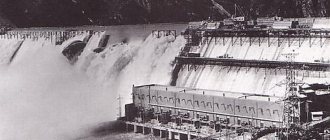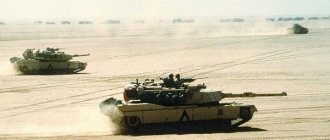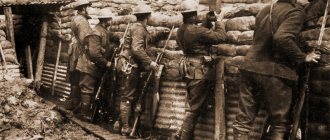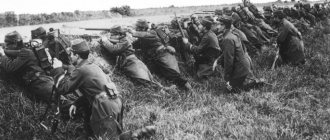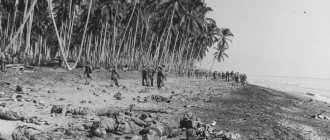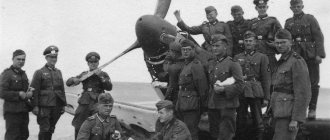In the summer of 1916, an event occurred that went down in history as the first battle in the history of the world using tank technology. Before this, the outcome of any battles, including those that happened during the First World War, was decided by infantry, easily destroyed by enemy flamethrower and cannon fire, which made it possible to destroy enemy soldiers in hundreds and thousands, with just one shot fired. The appearance of tanks on the battlefield could solve many problems, including reducing personnel losses.
The background to this significant event is as follows:
- The offensive plan on all fronts, including the Western, was developed and approved at the beginning of March 1916 in Chantilly. The combined army of the French and British was supposed to launch an attack on fortified German positions in early July, and the Russian and Italian 15 days earlier.
- In May, the plan was significantly changed; the French, having lost over half a million soldiers killed at Verdun, could no longer field in the upcoming battle the number of soldiers that the allies demanded. As a result, the length of the front was reduced from 70 to 40 kilometers, and the focus was placed mainly on the English paramilitary corps of General Allenby and the 4th Army of General Rawlinson, which consisted of 16 divisions. For their part, the French were able to field only 18 divisions under the leadership of General Fayol, and exclusively as auxiliary ones. The French General Foch was entrusted with command over both the French and the British.
- According to the plan, the Allied armies were supposed to break through the German front at its various lines, doing this gradually, step by step capturing the enemy’s fortified positions. Preparations for the operation lasted as long as 5 months, soldiers were prepared and trained, military factories urgently stockpiled shells and rifles in warehouses, new guns were cast, tanks and aircraft were designed, the total number of which reached 350-360. Throughout this entire time, the British and French troops, in particular the infantry, intensively rehearsed the fire attack. Naturally, German intelligence was fully aware of these events, but the government did not take any important response measures, deciding that the French had not yet recovered from Verdun, and the British were not strong enough.
- Just before the offensive, the number of German troops on the breakthrough line did not exceed 8 divisions, but the Germans relied not on them, but on fortified dugouts, trenches and concrete fortifications, stretched out in three lines about 8 kilometers wide each, with several rows stretched between the lines barbed wire.
Main events
On June 24, without waiting for the target date, British artillery began intensive shelling of German positions near the Somme River. The Germans, having finally realized their mistake, lost as a result of this shelling more than half of all their artillery and the entire first line of defense, immediately beginning to pull reserve divisions into the breakthrough area.
On July 1, as planned, the infantry was launched, which easily overcame the practically destroyed first line of German troops, but when moving to the second and third positions, it lost a huge number of soldiers and was driven back. On this day, over 20 thousand British and French soldiers died, more than 35 thousand were seriously injured, some of them were taken prisoner. At the same time, the outnumbered French not only captured and held the second line of defense, but also took Barle, however, leaving it a few hours later, since the commander was not ready for such a rapid development of events and ordered a retreat. A new offensive on the French sector of the front began only on July 5, but by this time the Germans had pulled several additional divisions to this area, as a result several thousand soldiers died, but the city that was so recklessly abandoned was not taken. The French tried to capture Barle from the moment of their retreat in July until October.
In general, the Allies were unable to organize a strong and rapid offensive; it proceeded sluggishly and unorganized. Just a month after the start of the battle, the British and French lost so many soldiers that 9 additional divisions were brought into the battle, while Germany transferred as many as 20 divisions to the Somme. In August, the balance of forces of the opponents was the same, but their numbers fluctuated significantly, although the army of the British and French remained almost twice as large as the Germans. Against 500 British aircraft, the Germans were able to field only 300, and against 52 divisions only 31.
The situation for Germany became greatly complicated after the Russian troops carried out the Brusilov breakthrough; the German command exhausted all its reserves and was forced to switch to a planned defense with the last of its strength, including not only on the Somme, but also near Verdun.
Under these conditions, the British decided to make another breakthrough attempt, scheduled for September 3, 1916. After the artillery shelling, all available reserves, including French ones, were brought into action, and on September 15, tanks went into battle for the first time.
In total, the command had at its disposal about 50 tanks with a well-trained crew capable of acting harmoniously in battle conditions, but only 18 of them actually took part in the battle, while the rest did not show up for the battle for a number of reasons. A big miscalculation of the designers and developers of the tank offensive was discarding the fact that the area near the river was swampy, and the bulky, clumsy tanks each weighing several hundred tons simply could not get out of the swampy quagmire. But despite the apparent failure, the use of the first tanks also had its advantage; it was thanks to them, naturally, not so much as a military weapon but as a terrifying weapon, that the British were able to advance several tens of kilometers deep into enemy positions and on September 27 they were able to capture the heights between the Somme River and small river Ankr.
A further offensive made no sense, since the exhausted soldiers would not have been able to hold the positions they had regained, therefore, despite several offensive attempts made in October, in fact, since November, no military operations had been carried out in this area, and the operation was completed.
War in the trenches
At night, when the shooting subsided, Lieutenant Junger's platoon, along with other units of the division, was sent to the first line of trenches. Let's go - we got lost.
“Finally, the commander found the way, determining the direction by the most noticeable accumulation of corpses,” Jünger would write, not without grace, after the war.
“Finally we reached the front line, densely occupied by people hiding in the pits; when they learned that the change had come, their colorless voices trembled with joy. The Bavarian sergeant major, after saying a few words, handed me the area and the rocket launcher...
The British are on the attack. Photo: Commons.wikimedia.org
When dawn broke, the unfamiliar terrain gradually appeared before the amazed gaze. The hollow turned out to be just a series of huge craters filled with shreds of uniforms, weapons and the dead; The area around, as far as the view could reach, was all pitted with heavy shells. In vain the eyes tried to find even one pathetic stalk. The torn up battlefield was a terrible sight. Among the living fighters lay the dead. While digging up the “fox holes,” we discovered that they were located on top of each other in layers. The companies, standing shoulder to shoulder in hurricane fire, collapsed one after another, the corpses were covered with earth thrown up by shells, and a new shift immediately took the place of the dead. Now it's our turn.
The hollow and the field behind it were dotted with Germans, the front field with the British. Arms, legs and heads protruded from the mounds; severed limbs and bodies lay in front of our holes; in order to hide their disfigured faces, some of them were covered with overcoats or raincoats. Despite the heat, no one thought to bury them.”
Significance of the Battle of the Somme
The Battle of the Somme became one of the greatest in the history of the First World War; according to rough estimates, losses during it totaled about 1 million people, both French and British, and Germans. The battle revealed and confirmed the economic and military superiority of the Entente forces in comparison with the forces of the Central Powers; in fact, it was from November 1916 that the Germans finally abandoned the thought of attack and moved on to the planned defense of their borders along the entire front. In addition, the battle showed how important constant training of personnel of regiments and divisions is for the success of military offensive and defensive operations. The tanks used in the battle showed how effective they could be when used thoughtfully and correctly, effectively ushering in the era of large-scale tank construction.
Nicholas II abdication of the throne
As soon as Nicholas II (who was away) learned about the uprising, he immediately went to the capital. Unfortunately for him, the striking railway workers did not allow the royal train to pass. The Emperor went to the headquarters of the Northern Front in Pskov. Telegrams from Petrograd from M. Rodzianko came to the Tsar in Pskov, proposing a change of government and abdication. In Pskov itself, the commander of the Northern Front, General N. Ruzsky, put pressure on the tsar.
Nicholas II hesitated and decided to find out the opinion of the front commanders. To his surprise, everyone spoke in favor of Nicholas II’s abdication of the throne - everyone except the fleet commander, Admiral A. Kolchak. On March 2, 1917, at 15:05, Russian Emperor Nicholas II signed a manifesto abdicating the throne.
Nicholas II Alexandrovich Romanov: biography, life, interesting facts
Nicholas II abdicated for himself, as well as his son Tsarevich Alexei. M. A. Romanov was planned to become the new king. It would seem that the conspirators’ goal was achieved, but the people decided everything in their own way. People no longer needed a tsar, Mikhail Romanov also had to abdicate. This is how the Provisional Government appeared in Russia. On March 3, 1917, the thousand-year history of the Russian monarchy came to an end, and difficult trials awaited Russia ahead.
People rejoiced at freedom and equality, the February revolution was greeted with enthusiasm by the workers and peasants. Finally, life promised equal wealth and equality for everyone, an end to menial, low-paid labor. What lay ahead was a bright, decent standard of living and prosperity not only for everyone individually, but for the country as a whole.
hurricane fire
The German attack began on the morning of February 21 with a massive artillery strike on the French, whose positions were located in the area of the city of Verdun. A little less than a thousand guns plowed a 5-kilometer section of the front for 8 hours. The Germans themselves called that attack “Trommelfeuer” - “Hurricane Fire”. And then the infantry came into action - about 80 thousand soldiers with machine guns and flamethrowers went to clear the plowed area. During the first day, the Germans managed to advance 2 kilometers, while capturing the first line of enemy trenches.
As conceived by the German command, a large-scale operation codenamed “Gericht” (“Justice”) would make it possible to break through the French front in the area of the strategically important fortress of Verdun. And this, in turn, would open the road to the capital of the Third Republic. The initiator of “Gericht” was the head of the German General Staff, General Erich von Falkenhayn. He took into account the experience of positional battles at the beginning of the First World War, so he placed the main emphasis on total artillery preparation preceding the actions of the soldiers. The guns were supposed to destroy the defense line, and the assault troops were to break into the second.
Several months before the attack at Verdun, the French received alarming information from intelligence. It said that there was a high probability of a large-scale German offensive. But the command treated such statements with a great deal of distrust. The generals and colonels understood that a powerful attack required large resources: both human and artillery. It was simply impossible to transfer them unnoticed to Verdun. How can huge 420mm Big Bertha mortars be secretly delivered and deployed? Even the mentions of the offensive, which were in letters from prisoners of war, were treated with skepticism by the French command. It was confident in provocation and was too arrogant.
↑ Results
In November 1816, the battle had to be stopped because both sides were severely exhausted. The results of the battle were mixed.
- German troops were withdrawn from a perfectly fortified position on the Somme.
- The Germans' failure marked the beginning of their great retreat to the Hindenburg Line in 1917.
- The numerical losses of both sides were approximately the same - approximately 600 thousand people on each side. However, qualitatively, the losses were very different: in the English divisions, mostly civilian volunteers, poorly trained and without combat experience, fought, while professional soldiers fought in the German divisions. Therefore, for Germany, these losses were so significant that it could no longer fully recover from them.
- The Entente countries achieved military and economic superiority after the Somme.
- However, the Allies were unable to fully exploit their success: their forces were exhausted; The weakness of the allies was the lack of coordination of actions. On the contrary, the German army, one might say, lost with honor, showing real courage and bravery.
↑ Preparation
Preparations for the future offensive took five months. During this time, the material and technical base was prepared - ammunition was accumulated, 3,500 artillery pieces and 300 aircraft were provided; all units underwent the necessary combat exercises and tactical training.
It was assumed that the battle would be long and exhausting, the actions of the allies were to be based on the alternating use of artillery, clearing the territory, and infantry, occupying the vacated point. Thus, the Allies could seize territory abroad and push back the enemy.
The combat exercises did not go unnoticed by the Central Powers, but the German command decided that the British would not be able to organize an offensive operation, and the French were too exhausted by the Battle of Verdun to conduct active operations.




